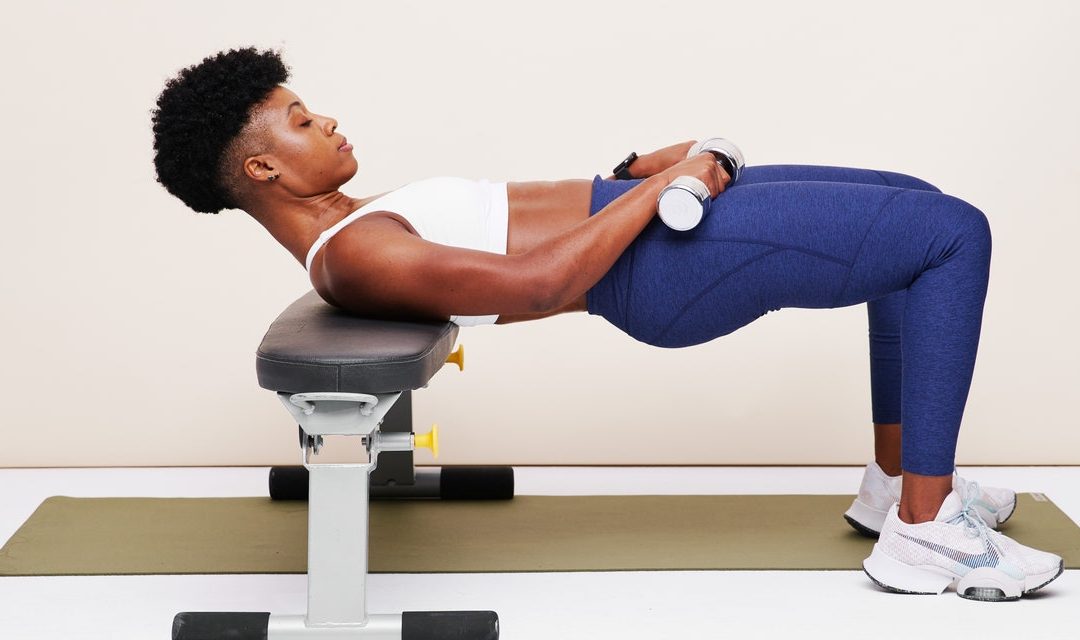Doing exercises that strengthen your glutes is important because they are your body’s main drivers of power and movement. For example, walking, climbing up stairs, picking up things off the ground, and running are all daily functional movements that rely on your glutes. And if you’re an athlete, your glutes are what allow you to jump higher, stay agile, and build speed.
“They are responsible for a lot of stability at your hips and low back. Oftentimes, when your glutes aren’t as strong as they should be, your body finds other ways to compensate, such as using your low back muscles,” DeMattos says. So building strong glutes play an important role in warding off lower back pain.
What’s more, building strong glutes can also have carryover in helping you get stronger in other lower-body exercises, such as the aforementioned squat and deadlift, since they’re big assisters in those moves too.
Why is the hip thrust exercise so good for your glutes?
The hip thrust is one of the best glute exercises out there because its movement pattern simply hammers your glutes: The hip extension portion (the top of the move) gives you the most glute activation, making the move more of an isolation exercise, DeMattos says. Plus, your hamstring muscles shorten during knee flexion, allowing for greater isolation of your glutes.
And research backs this up: A 2021 study in the Journal of Sports and Conditioning Research compared gluteus maximus activation when doing a barbell hip thrust, back squat, and split squat. The researchers found that the hip thrust had more EMG activity (which measures your muscle’s response or electrical activity to stimulation) than the back squat and split squat when doing three-rep maximum lifts. (There wasn’t a difference in peak gluteus maximus activation between the back squat and split squat.)
“Squats and deadlifts are great compound movements that work the glutes, but they don’t work as much isolation,” DeMattos says. “You have a lot more muscle groups coming in, like your core and back, depending on the variation.”
When comparing hip thrusts to deadlifts, hip thrusts also take the laurels. A 2019 review in the Journal of Sports Science & Medicine concluded that the barbell hip thrust has greater gluteus maximus activation than the deadlift. (That said, the traditional deadlift demonstrates more hamstring activation than the hip thrust.)
The horizontal loading with the hip thrusts is one reason while glute activation is higher with them than with squats or deadlifts. With vertically loaded exercises, there’s less tension on the hip extensor muscles (like your glutes) as you approach lockout; but with horizontally loaded moves, tension on those hip extensors is emphasized as you approach lockout.
Can you do weighted hip thrusts with dumbbells?
Absolutely. Doing weighted hip thrusts with dumbbells is a good way to keep adding challenge to your hip thrust, which is important to continue getting stronger and building more muscle.
Before you begin adding external resistance, though, you should make sure you’re able to complete unweighted reps of the exercise with proper form. When you’re ready to add weight, you can start with either one or two dumbbells. It depends on what your preference and comfort level are, but Rice says starting with one dumbbell might be easier. Just make sure that the weight is horizontally placed evenly between your hips for proper weight distribution and hold the dumbbell in place throughout the exercise so it doesn’t roll off your body.

